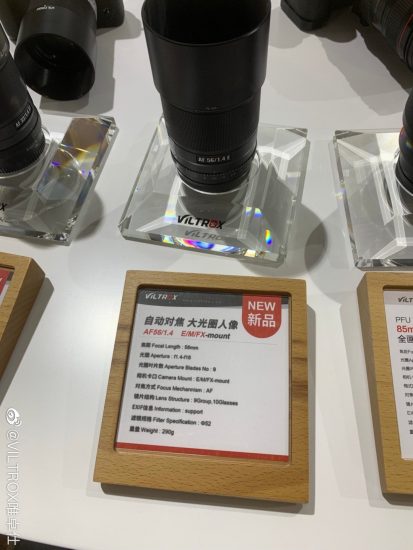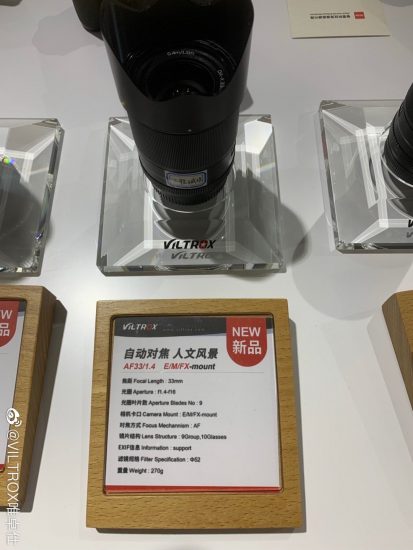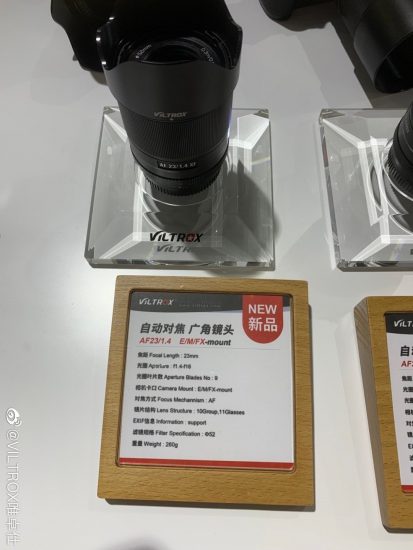The History Of The Electronic Viewfinder Told In A 5 Minutes Video
DPReview TV posted a neat 5 minutes video about how EVFs (Electronic ViewFinders) evolved over time. Not surprisingly, the excellent EVF featured on Canon’s EOS R is not discussed.
DPReview TV posted a neat 5 minutes video about how EVFs (Electronic ViewFinders) evolved over time. Not surprisingly, the excellent EVF featured on Canon’s EOS R is not discussed.
Viltron will soon announce three new lenses for APS-C mirrorless systems.
The new Viltron lenses will be available for the Canon EOS M, Fuji X and Sony E systems. The lenses have autofocus, and are 23mm f/1.4, 33mm f/1.4 and 56mm f/1.4.



BCNRetail posted the Japanese camera market shares from April 2018 to March 2019.
Canon is still the top dog in the bunch. But things look differently when compared to the previous year:
And an even more different picture is given by the overall value of camera sales:
Canon, Nikon and Olympus saw a huge drop in overall value of the sales. Fuji on the other hand is doing pretty good, having been able to sell 19.4% more cameras than the previous year.
[via Digicameinfo via Mirrorless Rumors]MiNT Camera announced the InstantKon RF70. The InstantKon RF70 is a new rangefinder, full control instant camera, using Fujifilm Instax Wide film
The InstantKon RF70_auto sells at $779, the InstantKon RF70 at $899. Both are available at MiNT.
The Motivation
Full control in an instant camera
Why is full control important?
Control the depth of field
Control the exact amount of light you need
All you need in one foldable body
InstantKon RF70_auto
Extras
World Press Photo is likely the most prestigious photojournalism contest. This year’s winner have been announced (nr. 1 is Crying Girl at the Border), and along with them information about the gear they used.
Spanish site Photolari collected all metadata and published some interesting statistics about the photographic gear used at World Press Photo 2019. These statistics show a few interesting things. Let’s first see the ranking:
World Press Photo 2019 brands:
No surprise Canon and Nikon rank first (last year Nikon was 1st and Canon 2nd). The ranking shows that Sony still has a hard time with professional photographers, being used by a meagre 2.6%. Even Fujifilm does better with a respectable 10.5%. No surprise either that almost no one uses Leica.
Mirrorless is taking over, isn’t it? Let’s see the camera system ranking:
As expected, full frame system dominate with 73.3%, followed by APS-C with 11.1% (does this figure contain the 10.5% Fuji cams?) , 15.5% are unknown sensor size.
Among the most used cameras we find the usual suspects (in this order): Canon EOS 5D Mark IV and Mark III, Nikon D5, Canon EOS-1D X Mark II, Nikon D850, Canon EOS 6D, and then more Canon’s and Nikon’s and some Fuji’s. Only one persone used a Sony a7R II and another one a Leica Q.
Is there something to add?
[via Photolari]Max Yuryev wonders which camera has the best low light performance, Canon EOS R, Sony A7 III, Fujifilm X-T3, Nikon Z7 or Pocket 4K?
Notice
This website or its third-party tools use cookies, which are necessary to its functioning and required to achieve the purposes illustrated in the cookie policy. If you want to know more or withdraw your consent to all or some of the cookies, please refer to the cookie policy.
By closing this banner you agree to the use of cookies.